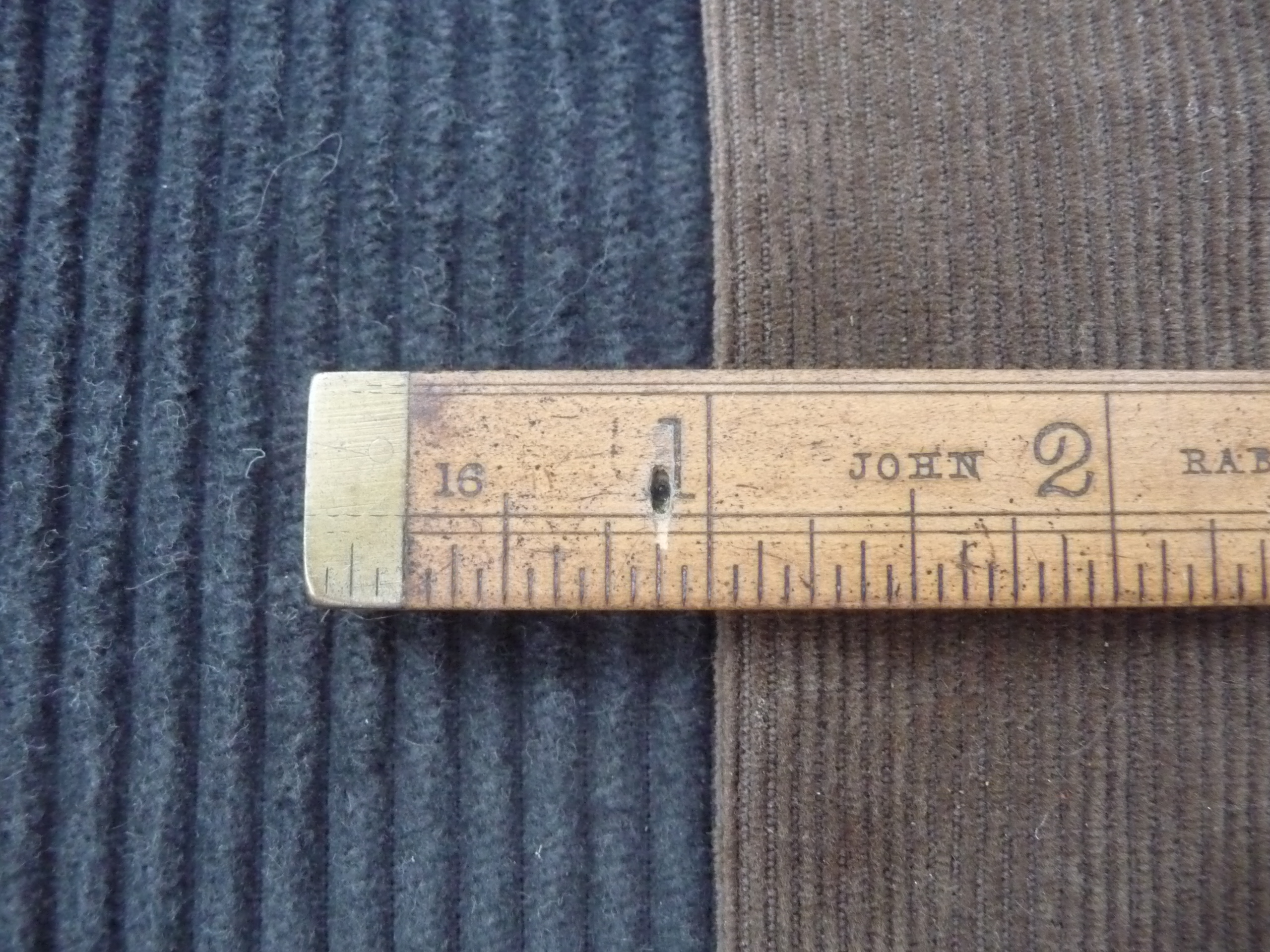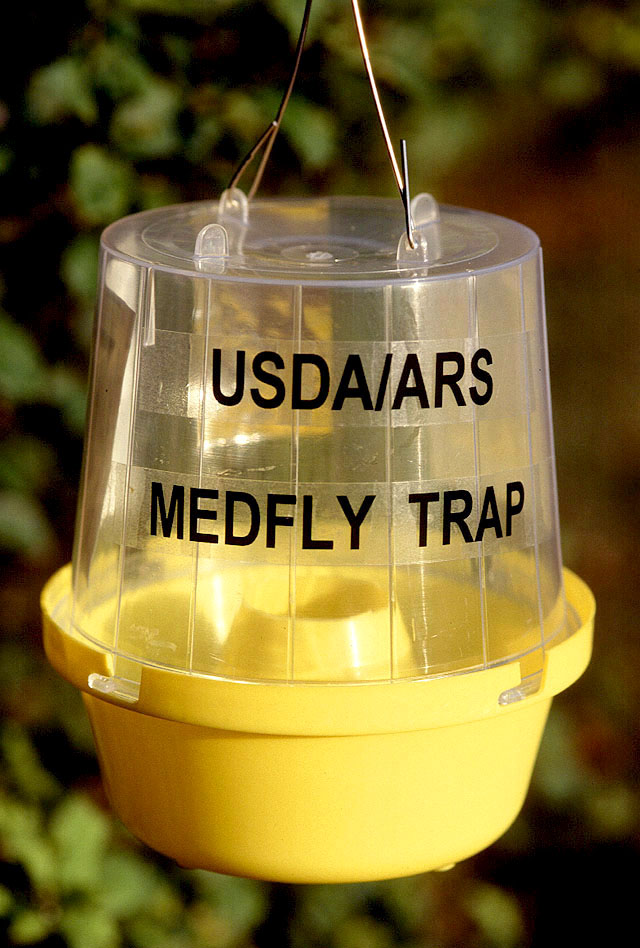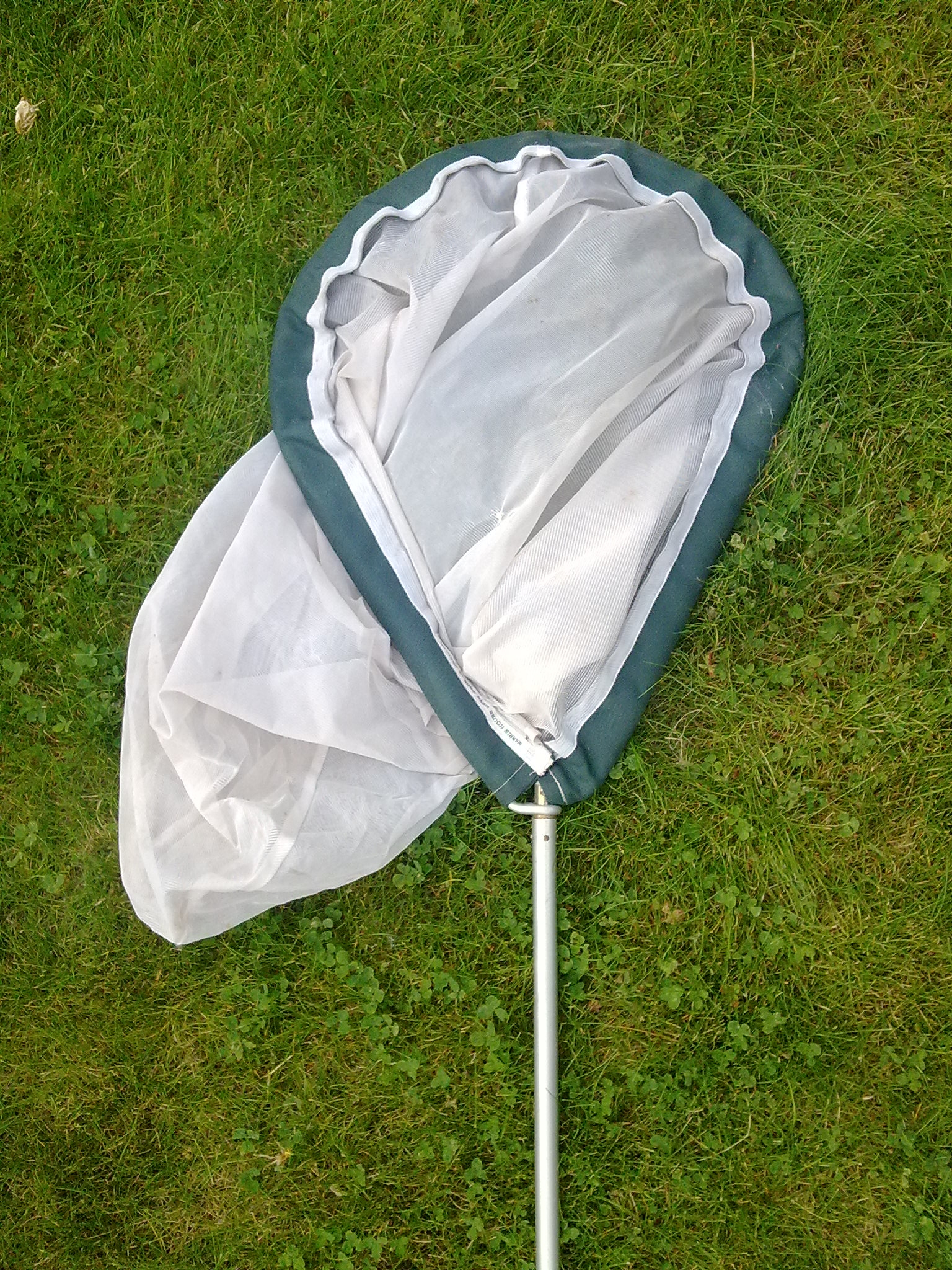|
Tick Dragging
Tick dragging is a method for collecting ticks used by parasitologists and other researchers studying tick populations in the wild. Method To conduct a tick drag, a researcher uses a strip of white cloth, usually corduroy, mounted on a pole that is tied to a length of rope. The researcher drags the cloth behind themselves through terrain that is suspected of harboring ticks, working in a grid-like pattern. They may also "flag" low-lying bushes and other vegetation by waving the cloth over them. Tick dragging is one of several methods of harvesting wild ticks for study in the lab. In at least one trial, the tick dragging method proved more successful than more technologically innovative techniques, such as live-baited traps and CO2-baited traps. The dragging method is a useful way to collect ticks from a large area; CO2 trapping is another method for localized sampling of ticks. Different species of tick also have variable sensitivity or responsiveness to this form of trapping ... [...More Info...] [...Related Items...] OR: [Wikipedia] [Google] [Baidu] |
Tick
Ticks (order Ixodida) are parasitic arachnids that are part of the mite superorder Parasitiformes. Adult ticks are approximately 3 to 5 mm in length depending on age, sex, species, and "fullness". Ticks are external parasites, living by feeding on the blood of mammals, birds, and sometimes reptiles and amphibians. The timing of the origin of ticks is uncertain, though the oldest known tick fossils are from the Cretaceous period, around 100 million years old. Ticks are widely distributed around the world, especially in warm, humid climates. Ticks belong to two major families, the Ixodidae or hard ticks, and the Argasidae, or soft ticks. '' Nuttalliella,'' a genus of tick from southern Africa is the only member of the family Nuttalliellidae, and represents the most primitive living lineage of ticks. Adults have ovoid/pear-shaped bodies (idiosomas) which become engorged with blood when they feed, and eight legs. Their cephalothorax and abdomen are completely fused. In ad ... [...More Info...] [...Related Items...] OR: [Wikipedia] [Google] [Baidu] |
Parasitology
Parasitology is the study of parasites, their hosts, and the relationship between them. As a biological discipline, the scope of parasitology is not determined by the organism or environment in question but by their way of life. This means it forms a synthesis of other disciplines, and draws on techniques from fields such as cell biology, bioinformatics, biochemistry, molecular biology, immunology, genetics, evolution and ecology. Fields The study of these diverse organisms means that the subject is often broken up into simpler, more focused units, which use common techniques, even if they are not studying the same organisms or diseases. Much research in parasitology falls somewhere between two or more of these definitions. In general, the study of prokaryotes falls under the field of bacteriology rather than parasitology. Medical The parasitologist F.E.G. Cox noted that "Humans are hosts to nearly 300 species of parasitic worms and over 70 species of protozoa, some derived ... [...More Info...] [...Related Items...] OR: [Wikipedia] [Google] [Baidu] |
Tick Dragging
Tick dragging is a method for collecting ticks used by parasitologists and other researchers studying tick populations in the wild. Method To conduct a tick drag, a researcher uses a strip of white cloth, usually corduroy, mounted on a pole that is tied to a length of rope. The researcher drags the cloth behind themselves through terrain that is suspected of harboring ticks, working in a grid-like pattern. They may also "flag" low-lying bushes and other vegetation by waving the cloth over them. Tick dragging is one of several methods of harvesting wild ticks for study in the lab. In at least one trial, the tick dragging method proved more successful than more technologically innovative techniques, such as live-baited traps and CO2-baited traps. The dragging method is a useful way to collect ticks from a large area; CO2 trapping is another method for localized sampling of ticks. Different species of tick also have variable sensitivity or responsiveness to this form of trapping ... [...More Info...] [...Related Items...] OR: [Wikipedia] [Google] [Baidu] |
Corduroy
Corduroy is a textile with a distinctively raised "cord" or wale texture. Modern corduroy is most commonly composed of tufted cords, sometimes exhibiting a channel (bare to the base fabric) between them. Both velvet and corduroy derive from fustian fabric. Corduroy looks as if it is made from multiple cords laid parallel to each other. Etymology The word ''corduroy'' is from ''cord'' and ''duroy'', a coarse woollen cloth made in England in the 18th century. Although the origin of ''duroy'' is not attested and although its likely meaning is ''du roi'' (''of the King''), it does not follow that the full phrase ''corde du roi'' derives from ''the cord of the King''. This is probably a false etymology. Variations Corduroy is made by weaving extra sets of fibre into the base fabric to form vertical ridges called ''wales''. The wales are built so that clear lines can be seen when they are cut into pile. Corduroy is considered a durable cloth, and is found in the construction of tr ... [...More Info...] [...Related Items...] OR: [Wikipedia] [Google] [Baidu] |
Carbon Dioxide
Carbon dioxide ( chemical formula ) is a chemical compound made up of molecules that each have one carbon atom covalently double bonded to two oxygen atoms. It is found in the gas state at room temperature. In the air, carbon dioxide is transparent to visible light but absorbs infrared radiation, acting as a greenhouse gas. It is a trace gas in Earth's atmosphere at 421 parts per million (ppm), or about 0.04% by volume (as of May 2022), having risen from pre-industrial levels of 280 ppm. Burning fossil fuels is the primary cause of these increased CO2 concentrations and also the primary cause of climate change.IPCC (2022Summary for policy makersiClimate Change 2022: Mitigation of Climate Change. Contribution of Working Group III to the Sixth Assessment Report of the Intergovernmental Panel on Climate Change Cambridge University Press, Cambridge, United Kingdom and New York, NY, USA Carbon dioxide is soluble in water and is found in groundwater, lakes, i ... [...More Info...] [...Related Items...] OR: [Wikipedia] [Google] [Baidu] |
Experimental And Applied Acarology
''Experimental and Applied Acarology'' is a monthly peer-reviewed scientific journal covering all aspects of acarology. It was established in 1985 and is published by Springer Science+Business Media. The editor-in-chief is Maurice W. Sabelis (University of Amsterdam The University of Amsterdam (abbreviated as UvA, nl, Universiteit van Amsterdam) is a public research university located in Amsterdam, Netherlands. The UvA is one of two large, publicly funded research universities in the city, the other bein ...). Abstracting and indexing The journal is abstracted and indexed in: External links * Acarology journals English-language journals Springer Science+Business Media academic journals Publications established in 1985 Monthly journals {{zoo-journal-stub ... [...More Info...] [...Related Items...] OR: [Wikipedia] [Google] [Baidu] |
Journal Of Medical Entomology
A journal, from the Old French ''journal'' (meaning "daily"), may refer to: * Bullet journal, a method of personal organization *Diary, a record of what happened over the course of a day or other period *Daybook, also known as a general journal, a daily record of financial transactions *Logbook, a record of events important to the operation of a vehicle, facility, or otherwise * Record (other) * Transaction log, a chronological record of data processing * Travel journal In publishing, ''journal'' can refer to various periodicals or serials: *Academic journal, an academic or scholarly periodical **Scientific journal, an academic journal focusing on science **Medical journal, an academic journal focusing on medicine **Law review, a professional journal focusing on legal interpretation * Magazine, non-academic or scholarly periodicals in general **Trade magazine, a magazine of interest to those of a particular profession or trade **Literary magazine, a magazine devoted to li ... [...More Info...] [...Related Items...] OR: [Wikipedia] [Google] [Baidu] |
Insect Trap
Insect traps are used to monitor or directly reduce populations of insects or other arthropods, by trapping individuals and killing them. They typically use food, visual lures, chemical attractants and pheromones as bait and are installed so that they do not injure other animals or humans or result in residues in foods or feeds. Visual lures use light, bright colors and shapes to attract pests. Chemical attractants or pheromones may attract only a specific sex. Insect traps are sometimes used in pest management programs instead of pesticides but are more often used to look at seasonal and distributional patterns of pest occurrence. This information may then be used in other pest management approaches. The trap mechanism or bait can vary widely. Flies and wasps are attracted by proteins. Mosquitoes and many other insects are attracted by bright colors, carbon dioxide, lactic acid, floral or fruity fragrances, warmth, moisture and pheromones. Synthetic attractants like methyl euge ... [...More Info...] [...Related Items...] OR: [Wikipedia] [Google] [Baidu] |
Sweep Net
Insect collecting refers to the collection of insects and other arthropods for scientific study or as a hobby. Most insects are small and the majority cannot be identified without the examination of minute morphological characters, so entomologists often make and maintain insect collections. Very large collections are conserved in natural history museums or universities where they are maintained and studied by specialists. Many college courses require students to form small collections. There are also amateur entomologists and collectors who keep collections. Historically, insect collecting has been widespread and was in the Victorian age a very popular educational hobby. Insect collecting has left traces in European cultural history, literature and songs (e.g., Georges Brassens's ''La chasse aux papillons'' (''The Hunt for Butterflies'')). The practice is particularly common among Japanese youths. Collecting techniques Insects are passively caught using funnels, pitfall tr ... [...More Info...] [...Related Items...] OR: [Wikipedia] [Google] [Baidu] |





